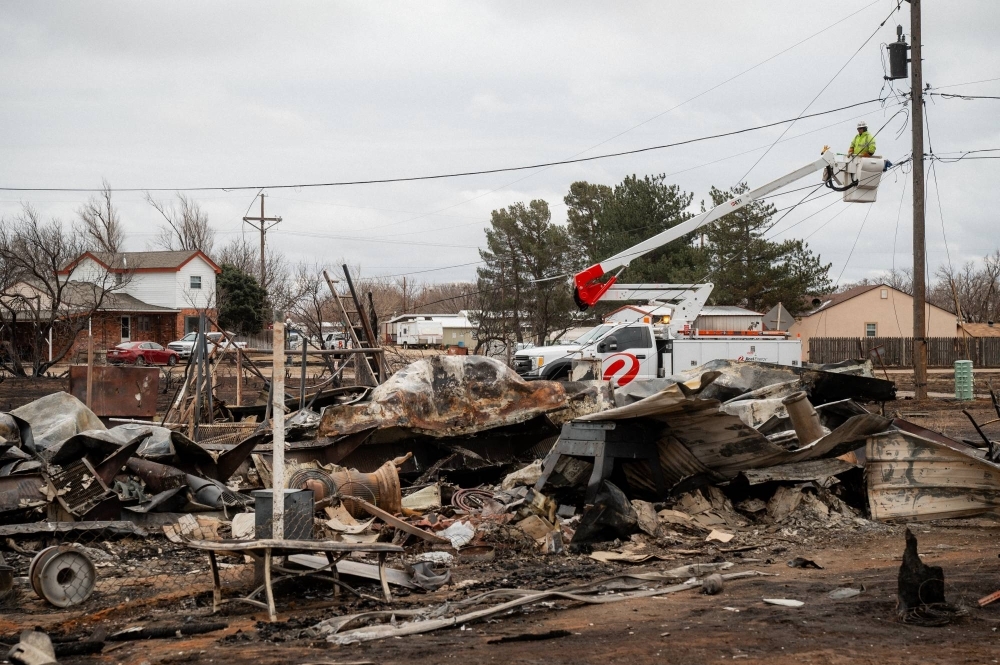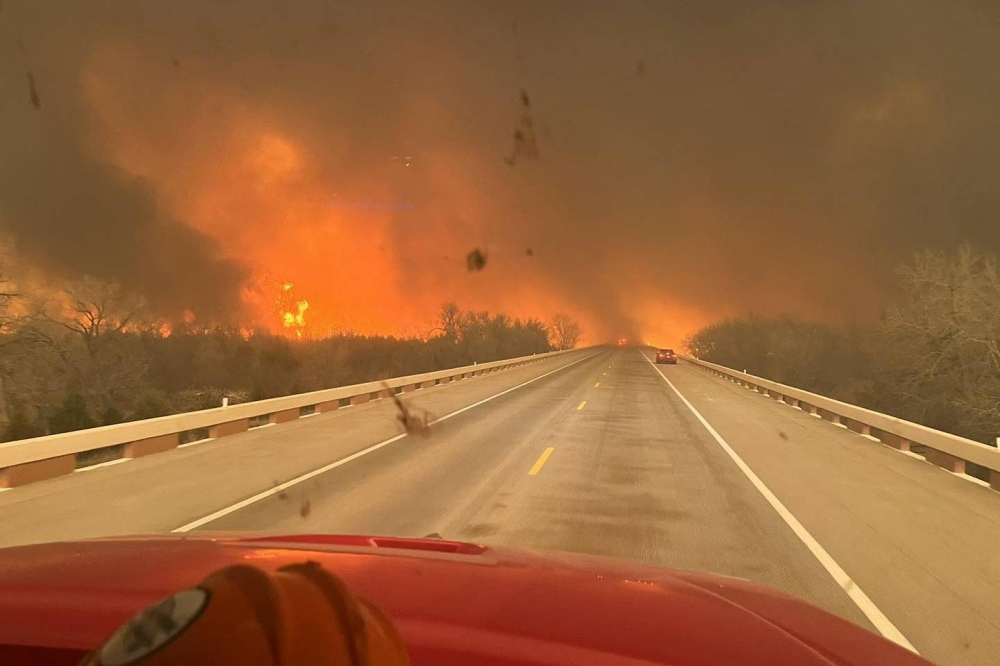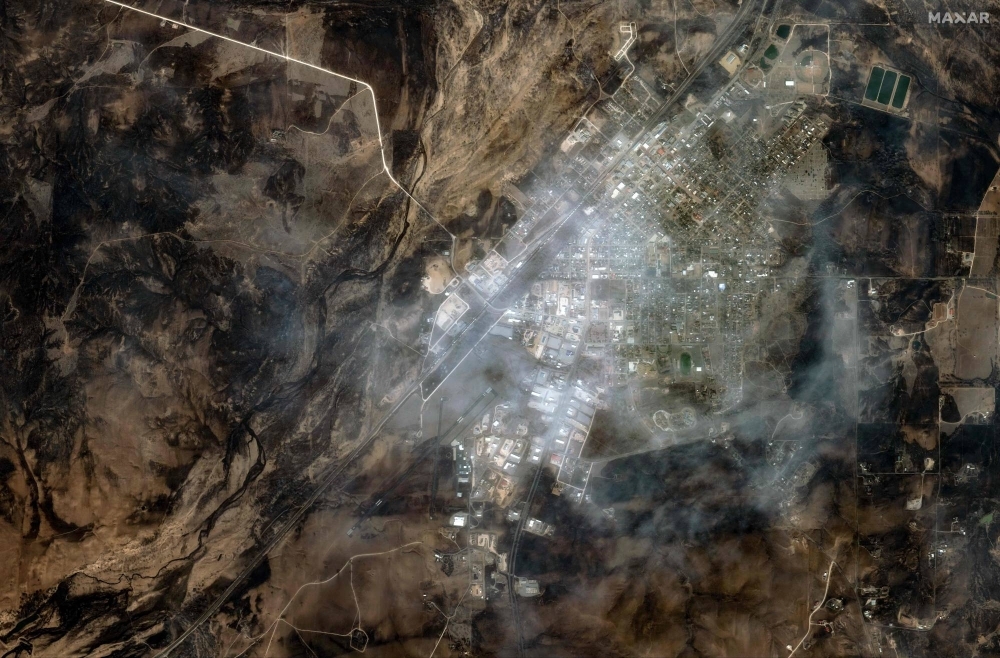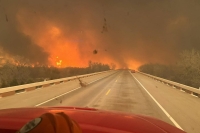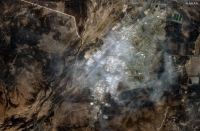Fire crews fought to contain a wildfire that grew to the largest on record in Texas history on Thursday after scorching more than 1 million acres (404,686 hectares) of grassland and timber, and destroying homes in small towns that dot the Texas Panhandle region.
The blaze, dubbed the Smokehouse Creek Fire, had doubled in size since Wednesday and was 3% contained as of Thursday morning, according to the Texas A&M Forest Service. Firefighters used a brief lull in the strong winds that have swept the sparsely populated area in recent days to erect barriers and douse hot spots of downed trees and thick grass.
On Thursday, Jason Wilhelm, 36, was using a frontloader to clear the lot in Canadian, a town about 160 kilometers northeast of Amarillo, where the house he shared with his wife and five children had stood a few days earlier. Charred grass and blackened trees were all that remained.
His wife was able to gather pictures, cash and some sentimental items from the home before the blaze roared through on Monday. "It was heartbreaking," Wilhelm said.
Rain and snow falling in the area on Thursday offered a "shot of moisture" before the air dries out and high winds return over the weekend, said Steve Hannah, an Amarillo-based meteorologist with the National Weather Service. Gusts could reach 65 kph by Sunday, he said.
The Smokehouse Creek Fire has now burned through about 4,400 square kilometers, an area larger than New York's Long Island. That replaced a 2006 fire that charred about 3,640 sq. km as the most expansive in state history.
While Texas is in midst of its natural fire season — running from January through May — the sheer size of the Smokehouse Creek blaze makes it an outlier, said Flavio Lehner, who teaches atmospheric science at Cornell University. He believes that human-driven climate change is a contributing factor, although a specific cause has yet been identified by authorities.
"It's warmer than it has been in the past, and that makes the vegetation drier, you add in the lack of rainfall, and that makes the conditions right for fire," Lehner said.
The number of structures destroyed or people evacuated was also unclear, but dozens of homes have been leveled. The fire has led to at least one fatality, according to Texas A&M. The victim was described by local media as an 83-year-old woman in Hutchinson County, northeast of Amarillo.
Lee Haygood, 57, the owner of a ranch about 40 km southeast of Canadian, managed to save all his cattle. While he was counting his blessings, he was also wondering how he would feed them.
"We didn't lose any cattle, but we lost 75% of our grassland," he said. "It'll take a full growing season to come back, not until maybe the fall."
In contrast with ranchers north of Canadian, Haygood on Monday had a few hours warning about the approaching wildfire. He moved his herd of 200 Hereford bulls off the 10 sq. km of grazing land and penned them into the single green wheat field he had left, hoping it would not ignite.
Fellow ranchers have already started sending semi-tractor trailers full of hay and meal to his ranch. "We are truly blessed," he said.
Several smaller wildfires were burning in other parts of the Panhandle. The next largest, the Windy Deuce fire, has burned 57,500 hectares and was 30% contained as of Thursday, according to Texas A&M.
On Tuesday, the Windy Deuce had crept to within a few kilometers of the U.S. Energy Department's Pantex plant, the nation's primary nuclear weapons assembly facility, located near Amarillo. That prompted officials to evacuate nonessential personnel and suspend operations.
But the leading edge of that blaze shifted to the north and west, away from Pantex, on Wednesday, allowing routine activities at the plant to resume.
"Operations at the Pantex Plant returned to normal Wednesday," the facility said in an online notice. "There is no imminent wildfire threat to the plant at this time."



